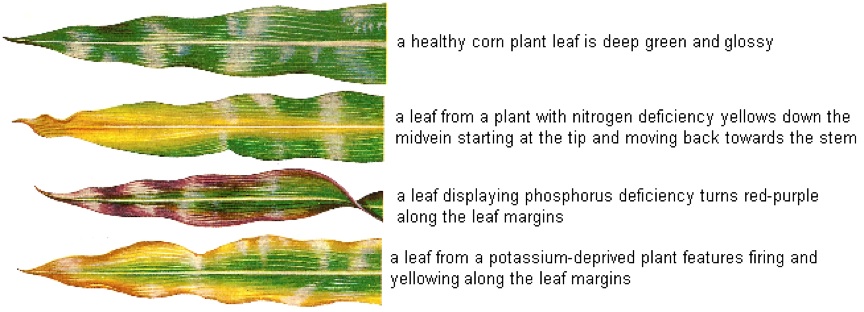Nitrogen availability limits the productivity of most cropping systems in the US. It is a component of chlorophyll, so when nitrogen is insufficient, leaves will take on a yellow (chlorotic) appearance down the middle of the leaf. New plant growth will be reduced as well, and may appear red or red-brown. Because of its essential role in amino acids and proteins, deficient plants and grains will have low protein content. Nitrogen excess results in extremely dark green leaves, and promotes vegetative plant growth. This growth, particularly of grains, may exceed the plant's ability to hold itself upright, and increased lodging is observed. Nitrogen is mobile both in the soil and in the plant, which affects its application and management, as discussed later.
Fields with adequate (left) and inadequate (right) nitrogen.
(original image location)


